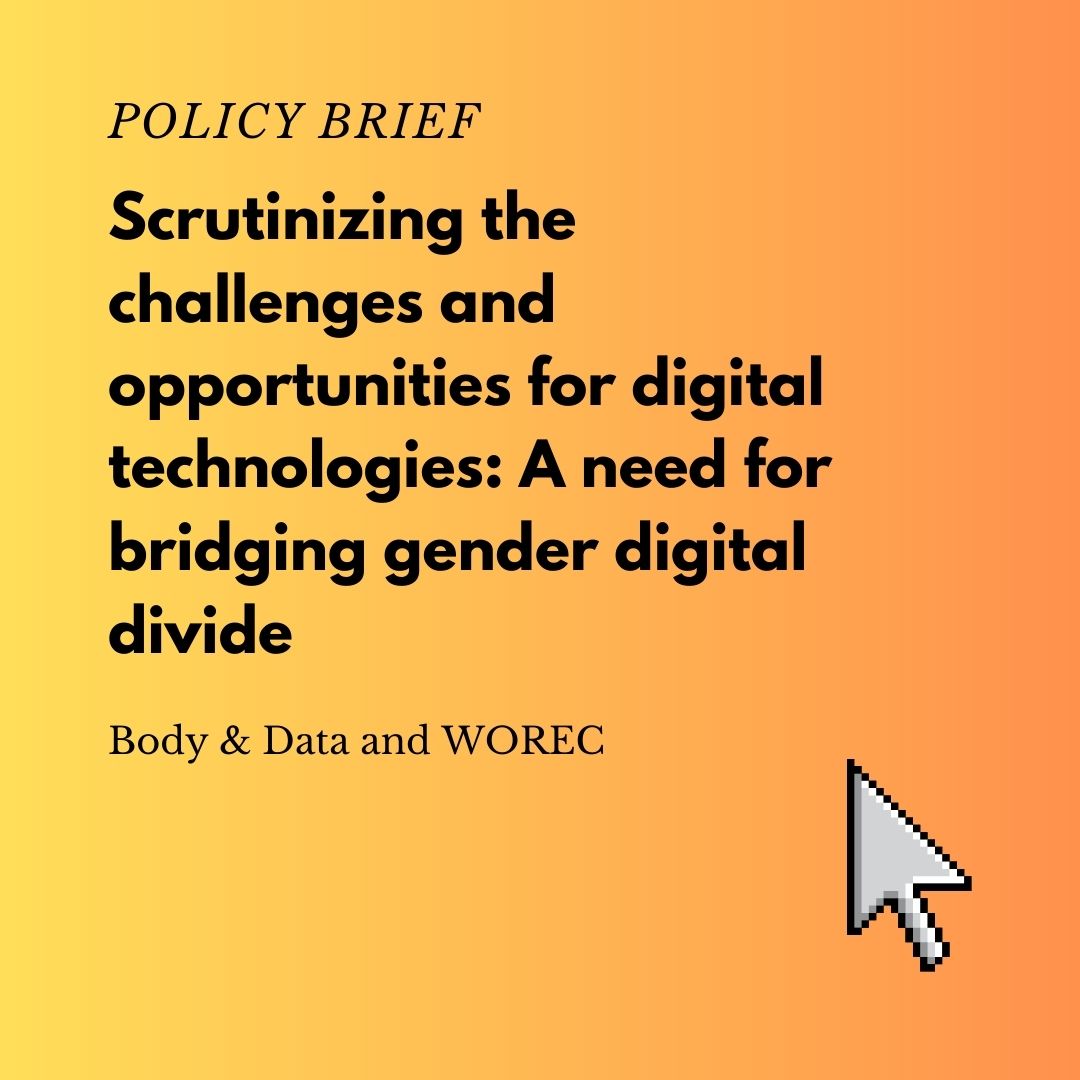Policy brief by Body & Data and WOREC
In today’s age, digital technologies are instrumental to access information, to express and explore oneself and to find communities. In a survey research (Body & Data, 2021) conducted with total 300 young people in Nepal most of them (up to 98.7%) use internet for the communication with friends and family, followed by for entertainment purpose. Internet and technology has become an integral part of people’s lives across different caste, class, age, ethnicity, gender identity, education, profession, age, marital status, geographical locations and so on. The role of digital technologies has been found to be essential in women empowerment and its importance was heightened during COVID-19. Digital technologies play an important role in accelerating the attainment of the Sustainable Development Goals (SDGs) and contribute to empowerment (HDR 2022). Thus, the 2030 agenda for Sustainable Development has placed technology as one of the key action areas for achieving SDG.
It is also considerably important to discuss how usage of digital technologies is shaping our sociopolitical outlook and how this could impact the realities of people specially of women, girls, non-binary, oppressed and marginalized groups. And such discourse doesn’t exist in vacuum. One has to deep dive into the socio-political structure where they belong, to find out the impact as well as opportunities and challenges digital technologies has brought.
The feminist discussion on technology and gender revolves around shifting the language around “empowerment” and “innovation” to rights, participation, security, and well-being. One of the underlying problem is the social structure including physical and digital infrastructure are built such that the voices of some people are heard and some are not heard. This paper unpacks the nuances around the experiences of girls and women in all their diversity with digital technologies. Based on the analysis of the work from various social justice movements in Nepal, this paper comes across three points to highlight on the major findings:

Gender digital divide is to be curbed to enable women and girls, in all their diversity, to enjoy universal, acceptable, affordable, unconditional, open, meaningful, and equal access to the internet.
Agency and autonomy of girls and women, in all their diversity, and those from marginalized groups, should be respected both online and offline while still fighting with existing structural inequality.
Online violence against all the women and girls, in all their diversity, is to be recognized as a form a violence rooted in patriarchal system, and it should be addressed not only through legal interventions but through structural change.
